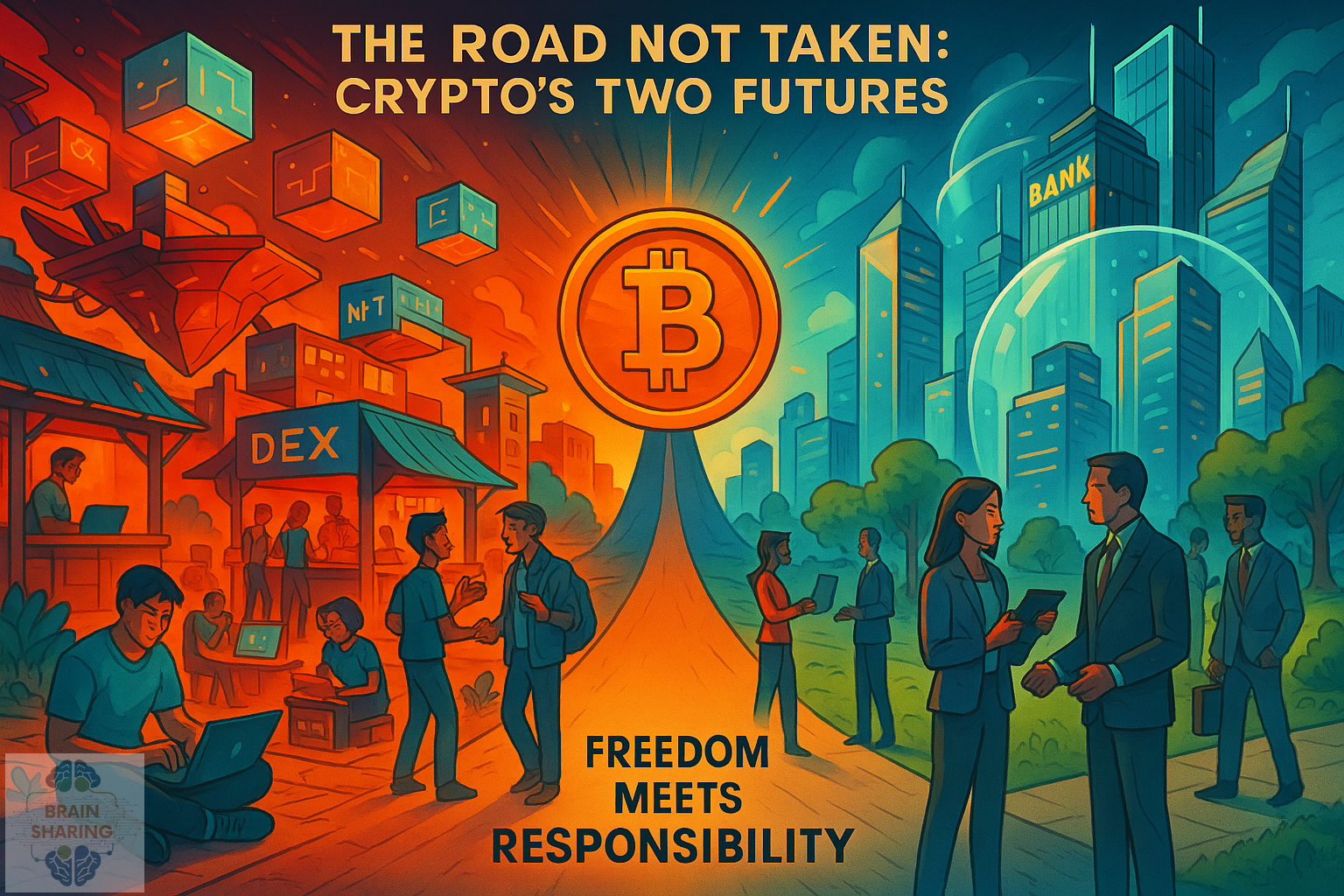
From Revolution to Regulation: How Cryptocurrency is Shaping a Safer, Fairer Financial Future

Cryptocurrency was born out of a desire to bypass the inefficiencies and injustices of traditional banking, sparked by the financial crises of the late 2000s. Visionary pioneers like David Chaum, Nick Szabo, and Satoshi Nakamoto paved the way, launching digital currencies and, later, programmable block chains like Ethereum that revolutionized finance and technology. Over the past decade, crypto has evolved from a niche experiment to a central part of the global economy, though it still represents less than 0.5% of worldwide GDP. As regulation increases, cryptocurrency is becoming safer and more accessible for everyday users, entrepreneurs, and innovators. Regulated crypto enables new business models, expands financial access, fuels start-ups, and allows seamless, border-less transactions. While critics worry about lost decentralization, regulation has curbed scams and fostered trust. An entirely unregulated ecosystem might have kept the early spirit alive, but would have remained risky and limited in impact. Today’s regulated crypto landscape promises broader inclusion, economic growth, and opportunity for all, marking a maturing—and still exciting—new era in global finance
#Cryptocurrency #Blockchain #Regulation #Fintech #GlobalEconomy #FinancialInclusion #CryptoInnovation #Bitcoin #Ethereum #FutureOfFinance
Read the full article below.
The content below was originally paywalled.
The story of cryptocurrency begins with a question: Why did anyone think we needed money that wasn’t under the thumb of banks or governments? The simple answer is frustration. People were fed up with a financial system full of middlemen, opaque fees, and slow processes—especially after the 2008 global financial crisis exposed the shocking fragility and flaws of international banking. The dream was clear: let’s build money that anyone, anywhere, can use—and no one can control.

The Necessity and Birth of Crypto
The pioneers of the crypto movement weren’t shady hackers in basements—they were cryptographers, computer scientists, and financial idealists. Decades before Bitcoin, David Chaum built “ecash” for secure digital payments. Nick Szabo theorized “bit gold,” a precursor to blockchain. Wei Dai dreamt up “b-money,” a system for anonymous internet transactions. But it was in 2008, when the mysterious Satoshi Nakamoto published the Bitcoin whitepaper, that the revolution truly began, offering the world a peer-to-peer, decentralized currency. No middlemen. No permissions. Just you, your wallet, and the network.
A Timeline of Crypto’s Meteoric Rise
How did we get from obscure whitepapers to headlines about Bitcoin fortunes and NFT art? The first Bitcoin block was mined in 2009. Then came exchanges, the first pizza paid for in Bitcoin (now a legendary story), and a host of “altcoins,” each experimenting with new ideas. The real quantum leap came in 2015 with the launch of Ethereum. Now, “cryptocurrency” wasn’t just money—it was programmable. Suddenly, apps could run on blockchains, start-ups could raise millions through ICOs, and artists could mint and sell digital masterpieces as NFTs.
By 2020, what began as a fringe experiment had become a genuine financial force. Payments giant PayPal, public companies, and even national governments dipped their toes into crypto. Bitcoin’s market value surged past $1 trillion, and talk of “DeFi” (decentralized finance) and “Web3” was everywhere.
The Present: Regulation Enters the Game
Fast-forward to today. Crypto isn’t just for techies or speculators—it’s played on the world stage. But with great power comes great scrutiny. Governments once wary of cryptocurrency are moving to regulate rather than ban it, launching frameworks like Europe’s MiCA and a raft of new rules from the US and Asia. Banks, sensing opportunity, are rushing in with crypto investment products, trading desks, and digital asset custody services.
Why the change of heart? Because as of now, cryptocurrency still hovers at less than 0.5% of world GDP—tiny, but growing fast. With the sector’s wild volatility calmed by clearer rules, mainstream money says, “We want in.” As experts forecast, with ongoing adoption and legal clarity, crypto’s slice of the global economy could multiply several times over in the next decade.

How Regulation Helps Real People
For everyday folks—especially anyone with under $5,000 in their bank account—crypto’s maturing environment offers real advantages. More people than ever can access basic financial services simply using a smartphone. Remittances are faster and cheaper, helping families worldwide move money with less hassle. Regulation slashes scams, adds protections, and makes crypto lending, payments, and investment safer for everyone. Artists, small business owners, and even gig workers can crowdfund, sell, and get paid globally—no banker’s blessing required.
And for dreamers and builders? Startups now raise global capital through token sales, DeFi, or NFTs—all under clearer rules that attract serious backers, not just speculative gamblers.
The Economic Impact—And What’s Next
Crypto has already unlocked massive innovation. Entire sectors have emerged or been supercharged: from global payments and online retail to digital art and supply chain tracking. Crypto has supported new jobs, opened up funding for small businesses, and forced the old financial guard to up their game.
But let’s be honest—there are risks. Cryptocurrency’s freedom is a double-edged sword. Whenever regulation lagged, scams and spectacular collapses followed. In a world where crypto stayed wild and unpoliced, only die-hards would dare join, innovation might stall, and mass adoption would remain a pipe dream.

The Road Not Taken: What If There Were No Rules?
If crypto had never been regulated, it might have remained closer to its original vision—fully decentralized, anonymous, and open-ended. This freer environment could have sparked even greater innovation and bold experimentation, unburdened by red tape. But it would also have carried higher risks, requiring users to be more self-reliant and cautious. Without clear rules, mainstream adoption and integration with traditional finance might have slowed. While scams exist with or without regulation, some protections and standards help build trust and scale. The trade-off: a wilder frontier versus a maturing ecosystem ready to serve more than just the early adopters.
Conclusion: Is Crypto’s New Era a Win for All?
With regulation and mainstream embrace, crypto is no longer an underground movement—it’s becoming a vital thread in the fabric of the global economy. The rules bring stability, trust, and opportunity; they help regular folks, unshackle creators, and open finance to more people. The pioneers imagined a new kind of money—today, their dream is finally growing up. And despite what the cynics say, it’s looking more and more like crypto’s best days, for the world and for the people, are yet to come.

